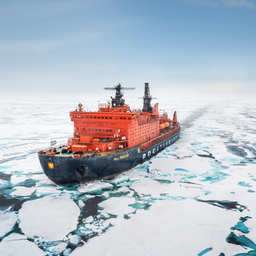
Antarctica: Your Comprehensive Guide for 2025
Antarctica‚ a land of breathtaking beauty and unparalleled adventure‚ beckons travelers seeking the extraordinary. Planning a trip to this remote and pristine continent requires careful consideration and preparation. This comprehensive guide for 2025 provides essential information‚ highlighting the best experiences and offering practical advice to ensure an unforgettable journey. From majestic glaciers to fascinating wildlife‚ Antarctica promises an experience unlike any other on Earth.
Planning Your Antarctic Adventure
Best Time to Visit
The Antarctic tourist season runs from November to March‚ during the Southern Hemisphere’s summer. Each month offers a slightly different experience:
- November: Pristine snow‚ penguin mating season begins.
- December & January: Peak wildlife viewing‚ longer daylight hours.
- February & March: Whale sightings are more frequent‚ penguin chicks are fledging.
Choosing Your Expedition
Various expedition options exist‚ ranging from classic cruises to more adventurous activities:
- Classic Cruises: Offer comfortable accommodations and informative lectures.
- Fly-Cruise Expeditions: Save time by flying over the Drake Passage.
- Adventure Cruises: Include activities like kayaking‚ snowshoeing‚ and mountaineering.
Essential Packing List
Packing for Antarctica requires careful consideration of the extreme weather conditions:
- Waterproof and windproof outer layers
- Thermal underwear
- Fleece jackets or sweaters
- Waterproof gloves and hat
- Sunglasses and sunscreen (even on cloudy days!)
- Waterproof boots
Top Antarctic Attractions
The Antarctic Peninsula
The most accessible part of Antarctica‚ the Peninsula boasts stunning landscapes and abundant wildlife.
South Georgia Island
Known as the “Galapagos of the South‚” South Georgia is home to massive penguin colonies and diverse birdlife.
Ross Sea
A remote and pristine region‚ the Ross Sea offers unparalleled opportunities for scientific exploration and wildlife viewing.
Factoid: Antarctica is the coldest‚ driest‚ and windiest continent on Earth. The lowest recorded temperature was -89.2°C (-128.6°F) at Vostok Station.
Responsible Travel in Antarctica
Protecting the fragile Antarctic environment is crucial. Follow these guidelines:
- Respect wildlife and maintain a safe distance.
- Do not leave any waste behind.
- Stay on designated paths.
- Support sustainable tourism practices.
The Antarctic Treaty System
The Antarctic Treaty System governs activities in Antarctica‚ ensuring its peaceful use for scientific research and environmental protection.
The treaty was signed in 1959 and has been crucial in preserving this unique continent for future generations.
FAQ: Your Antarctic Questions Answered
Is it safe to travel to Antarctica?
Yes‚ with reputable tour operators and adherence to safety guidelines‚ Antarctic travel is generally safe. However‚ be prepared for challenging weather conditions and potential risks associated with outdoor activities.
How much does it cost to travel to Antarctica?
Antarctic expeditions are typically expensive‚ ranging from $10‚000 to $30‚000+ per person‚ depending on the duration and type of trip.
What visas are required for Antarctica?
No visa is required to enter Antarctica itself. However‚ you may need visas for transit countries‚ such as Chile or Argentina.
Can I see the Aurora Australis in Antarctica?
Yes‚ the Aurora Australis (Southern Lights) is visible in Antarctica‚ particularly during the winter months (outside the typical tourist season).
What kind of wildlife can I expect to see?
You can expect to see penguins‚ seals‚ whales‚ seabirds‚ and other fascinating wildlife.
What if I get seasick on the Drake Passage?
Most ships provide medication and remedies for seasickness. Choose a larger ship for more stability‚ or consider a fly-cruise option to avoid the Drake Passage altogether.